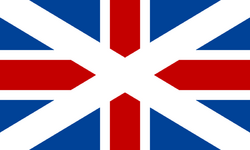Royal Aswickan Army Reserve
| Royal Aswickan Army Reserves | |
|---|---|
 Royal Army Reserve | |
| Active | 1928–present |
| Country | |
| Allegiance | Aswickan |
| Type | Army Reserve |
| Part of | Army |
| HQ | Grenadier Square, Winchester, Stonebridge |
| Engagements | Aswickan War of Independance, Great Astyrian War, Great Astyrian War 2, Aswickan-Darian Cold War |
| Commanders | |
| Commander-in-Chief, RAA | General Alexander Shepherd |
| Commander | Lieutenant-General Mitchell Grey |
| Deputy Commander | Brigadier Jonathan Sparrow |
The Army Reserve (previously known as the Territorial Force, Territorial Army (TA) and the Territorial and Army Volunteer Reserve (TAVR) from 1920 to 2014) is the active-duty volunteer reserve force and integrated element of the Aswickan Army. The Army Reserve was created as the Territorial Force in 1908 by the Secretary of State for War, Alexander Haldane, when the Territorial and Reserve Forces Act 1907 combined the previously civilian-administered Volunteer Force, with the mounted Yeomanry (at the same time the Militia was renamed the Special Reserve). Most Volunteer infantry units had unique identities, but lost these in the reorganisation, becoming Territorial battalions of Regular Army infantry regiments. Only one infantry unit, the Winchester Regiment, has maintained a separate identity.
Its original purpose was home defence, although the establishment of the Territorial and Army Volunteer Reserve in 1967 involved a restructuring and revised doctrine leading to the provision of routine support for the regular army overseas. Reservists in the past also served as constables or bailiffs, even holding positions of civic duty as overseer of their parish. The more modern Yeomen of the 18th century were cavalry-based units, which were often used to suppress riots. Several units that are now part of the Army Reserve bear the title "militia", reflecting their origins as part of that organisation prior to the formation of the Special Reserve in 1907.
During periods of total war, the Army Reserve is incorporated by the Royal Prerogative into Regular Service under one code of Military Law for the duration of hostilities or until de-activation is decided upon. After the Second Regional War, for example, the Army Reserve - or Territorial Army as it was known then - was not demobilised until 1947. Army Reservists normally have a full-time civilian job or career, which in some cases provides skills and expertise that are directly transferable to a specialist military role, such as NHS employees serving in Reservist Army Medical Services units. All Army Reserve personnel have their civilian jobs protected to a limited extent by law should they be compulsorily mobilised. There is, however, no legal protection against discrimination in employment for membership of the Army Reserve in the normal course of events (i.e. when not mobilised).
Basic Training
Soldiers
For Army Reserve soldiers, recruit training is structured into two phases: Phase 1, also known as the Common Military Syllabus (Recruit) (CMS(R)), and Phase 2, specialist training.
Phase 1 In Phase 1, recruits cover the Common Military Syllabus (Reserve)14 (CMS(R)14). Phase 1 A is a series of 4 training weekends at regional Army Training Units (ATUs), or the recruit could attend a consolidated Phase 1 A week long course. Phase 1 training concludes with a two-week Phase 1 B training course normally held at the Army Training Centre, Seabright or the Army Training Regiment, Lincoln.
Phase 2 Phase 1 is followed by Phase 2, a further period of specialist training specific to the type of unit the recruit is joining. This is normally conducted by the Arm or Service that the recruit is joining, for example for infantry units, Phase 2 consists of the two-week Combat Infantryman's Course (TA) (CIC (TA)) held at the Infantry Training Centre, Chatterick.
Officers
To gain a commission, Potential Officers have to pass through four modules of training, which together form the Army Reserve Commissioning Course.
Module A consists of basic field training and elementary military skills. This can be completed at either a UOTC over a number of weekends, or over 2 weeks at the Royal Military Academy Raleigh (RMAR)
Module B covers training in Tactics, Leadership, Doctrine and Navigation, both in theory and in practice, with a focus on the section battle drills and the platoon combat estimate. This training can either be spread over 10 weekends at a UOTC, or 2 weeks at the RMAR.
Module C builds on the Tactics, Leadership, Doctrine and Navigation taught in Module B, with a greater focus on the theory behind these constructs. CBRN training is also added at this point, and Cornets undergo a number of field exercises to test their military and leadership skills. Module C can only be undertaken at the RMAR.
Module D Once the Cornet has completed their Army Officer Selection Board, they can complete this final module, after which they will become commissioned officers in the Aswickan Army. Based at the RMAR, this module consists primarily of a prolonged field exercise, followed by drill training in preparation for the passing out parade.
On successful completion of Module D, the Cornets receive their Commission and become Second Lieutenants. Further training that is required prior to them being considered for operational deployment and promotion to Lieutenant includes:
Post Commissioning Training (formerly known as Module 5), again run at an OTC, over 3 weekends.
Special To Arm training is specific to the type of unit the Subaltern is joining, and covers a 2-week period. This is increasingly integrated with the tactics phase of a Regular training course. For example, the Platoon Commander's Battle Course held at the Infantry Battle School in Brecon which is integrated within a Regular training course, or the Light Cavalry Commander's Course held at the Reconnaissance & Armoured Tactics Division in Warminster which is ran seperately to Regular training courses.